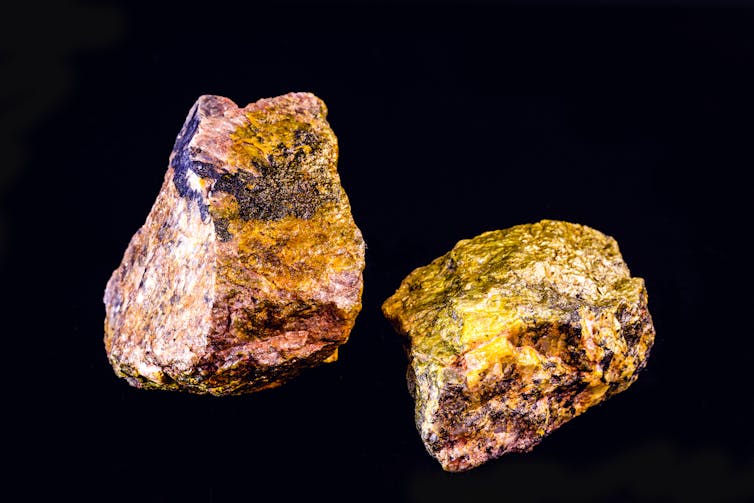This year marks the 30th anniversary of the 1991 Gulf War. A United Nations coalition of about 700,000 troops led by the United States liberated Kuwait from Iraqi occupation in the first half of 1991. But after the war ended, around 25% of those who served developed Gulf War Illness – also referred to as Gulf War Syndrome – a chronic condition whose cause remains unproven and debated. Symptoms include fatigue, night sweats, memory and concentration problems, diarrhoea, sexual dysfunction and chronic body pain.
Many of these symptoms are telltale signs of a brain problem resulting from impaired transmission of nerve signals. Theories of the illness’s causes include the trauma of war and exposure to unusual substances – such as pesticides used to control insects, dust from depleted uranium munitions, downwind smoke from burning oil wells, low-level nerve gas, and medication taken to protect against nerve gas. Many of these conditions were unique to the 1991 war. But our latest research is likely to rule out one of these causes.
During the war, weapons made of depleted uranium metal were used to destroy Iraqi tanks. The toxic dust released from them was thought to have contributed to Gulf War Illness. But our study shows that depleted uranium played no role in the illness. This now narrows the illness’s cause to sarin nerve gas dispersed during the conflict, possibly compounded by pesticide exposure.
Depleted uranium
Depleted uranium is uranium (a heavy metal) from which the radioactive isotope used in bombs and nuclear fuel has largely been removed. It’s been made into projectiles fired to destroy armoured vehicles.
Explosions from these projectiles generate fine oxidised uranium dust that can be inhaled and trapped deep in the lungs. Inhaled uranium dust will slowly dissolve into the bloodstream and deposit into bone and kidney. Absorption of large doses could cause damage to the kidneys, lungs or bones.
Any medically significant amount of inhaled depleted uranium will, over many years, be gradually excreted from the body in urine. If inhalation has been significant, it will be detectable in urine many decades later. These levels can be calculated using models of human metabolism.
To see if depleted uranium was a cause of Gulf War Illness, we used a tool called a mass spectrometer to measure the uranium isotopes from chemically processed urine samples. The mass spectrometer is an instrument which extracts uranium ions from the samples, accelerates them in a vacuum, separates the different isotopes of uranium using a magnetic field, and then quantifies each isotope. By measuring the uranium concentration, the excretion of depleted uranium per day can then be calculated.

RHJPhtotoandilustration/ Shutterstock
In order to precisely measure this isotope ratio and therefore quantify the excretion of depleted uranium, we had to separate and purify uranium from everything else in the urine sample. This was so the mass spectrometer would deliver both accurate and precise results.
Our method was more than ten times more sensitive than any test previously done on US troops that served in the Gulf War. The sensitivity could identify even very low levels of inhaled depleted uranium exposure during the conflict. We then applied this method to the urine samples of 106 veterans with Gulf War Illness and a control group of 48 veterans without the illness.
The mass spectrometry found no depleted uranium in any sample in either the control group or from soldiers with Gulf War Illness. This showed that these veterans could not have inhaled more than 0.1 milligrams of depleted uranium, so not enough to cause any illness.
Since the veterans tested were representative of those all over the US, our findings remove depleted uranium from the list of possible causes of Gulf War Illness. This is the most robust result in the last 25 years on the relationship between depleted uranium and Gulf War Illness.
Sarin nerve gas
This isn’t to say radioactive substances in the environment – especially those used in warfare – have not been a cause for concern. Courts have even ruled that exposure to depleted uranium has contributed to the death of soldiers in Italy and in the United Kingdom.
Considering our results, however, it seems less likely that dust from depleted uranium explosions caused harm to soldiers during the Gulf War. But no robust health studies have looked at the effect on civilians exposed to pollution from factories that processed depleted uranium. As a result, the general health risk of substantial inhalation of depleted uranium is still not clearly known.
Eliminating depleted uranium as a possible culprit may bring us one step closer to uncovering the cause. Previous medical studies on Gulf War Illness have documented a problem with the brain’s nerve signal transmission system. This problem is consistent with the effects of low-level exposure to sarin nerve gas, possibly compounded by exposure to pesticides. Given our study’s findings, this appears to be the most likely cause.
Nerve gas was accidentally released into the environment when the US bombed chemical weapons storage facilities in Iraq in late January 1991. Nerve gas alarms frequently sounded in coalition military positions and this indicates widespread exposure to troops.
But given our study doesn’t address whether long-term exposure to ground contamination of depleted uranium affects health, this should be a focus of future research. Repeating this study using the same high-sensitivity measurements in other potentially exposed populations could either highlight problems with depleted uranium contamination or provide reassurance of minimal health risks.
![]()
Robert Haley has received funding from the Gulf War Illness Research Program, Congressionally Directed Medical Research Program, U.S. Department of Defense; the U.S. Department of Veterans Affairs; the Perot Foundation, and the National Institutes of Health.
Randall Parrish does not work for, consult, own shares in or receive funding from any company or organisation that would benefit from this article, and has disclosed no relevant affiliations beyond their academic appointment.











